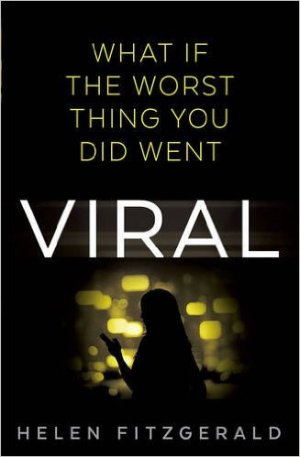 As 2020 draws to a close, I’m keen to wrap-up all my reviews so that I’m not playing catch-up well into the new year. (I will do my books of the year post tomorrow.)
As 2020 draws to a close, I’m keen to wrap-up all my reviews so that I’m not playing catch-up well into the new year. (I will do my books of the year post tomorrow.)
So here are four quick reviews of books I have read recently. They are a good reflection of my eclectic reading tastes because they include a translated novel (from Korea/France), a literary novel (from Ireland), a young adult novel (by two Aboriginal writers) and a psychological thriller-cum-mystery (from England).
They have been reviewed in alphabetical order by author’s surname.
 ‘Winter in Sokcho’ by Elisa Shua Dusapin
‘Winter in Sokcho’ by Elisa Shua Dusapin
Fiction – paperback; Daunt Books; 154 pages; 2020. Translated from the French by Aneesa Abbas Higgins
This intriguing novel is set in a South Korean tourist town, not far from the border with North Korea, during the offseason. The unnamed French-Korean narrator is a young woman in her early 20s who feels like an outsider but has no real desire to travel or live elsewhere. She has a disinterested boyfriend, who heads to Seoul to follow his dream of becoming a model, while she remains behind in Sokcho to help run a near-empty guest house. Her mother, who works in a nearby fish market, is critical of her daughter’s failure to get married and makes snide comments about her weight (she’s so thin you can see her ribs).
When a young Frenchman arrives at the guest house so he can work on his drawings (he’s a cartoonist), the narrator develops an uneasy one-sided relationship with him, acting as his tour guide and (unknown to her) muse for his art.
The entire novella is embued with a sense of melancholia, helped partly by the pared-back, hypnotic prose in which it’s written, but it also has a page-turning quality because the reader can’t help but wonder if the pair will ever become lovers. I really enjoyed this debut and ate it up in a matter of hours. Jacqui at JacquiWine’s Journal liked it too.
 ‘The Captains and the Kings’ by Jennifer Johnston
‘The Captains and the Kings’ by Jennifer Johnston
Fiction – Kindle edition; Headline; 152 pages; 1999.
Jennifer Johnston is my favourite living writer and this book, her debut, first published in 1972 when she was in her 40s, earned her the Author’s Club First Novel Award.
There’s an aching, melancholy quality to this story, about Mr Predergast, a well-travelled elderly Anglo-Irishman, a widower, who now lives alone in his crumbling Big House with just his (drunken) gardener for company. When a local lad, Diarmid, is foisted on him by his parents because they’re worried he won’t amount to anything and needs a reliable job, Mr Predergast is dismissive. He doesn’t want to employ him.
But Diarmid, who is friendless and lonely himself, doesn’t take no for an answer and eventually the pair develop an uneasy friendship that gives Mr Predergast a renewed lease of life, one that helps him get over the loss of his elder brother in the Great War and eases the pain of his late (overbearing) mother’s preference for her older son. As the pair become closer — an old man at the end of his life, a teenager on the brink of his — the local community, headed by the vicar, does not approve of the relationship between a Protestant man and a Catholic boy — with bittersweet consequences. Lisa at ANZLitLovers liked this one too.
 ‘Catching Teller Crow’ by Ambelin & Ezekiel Kwaymullina
‘Catching Teller Crow’ by Ambelin & Ezekiel Kwaymullina
Fiction – Kindle edition; Penguin; 180 pages; 2019.
This is one of the more unusual books I have read this year — a young adult novel written by an Aboriginal brother and sister duo — that employs Aboriginal storytelling devices in which time is not linear. It’s billed as a crime novel, but it incorporates elements of magic realism, has occasional chapters written entirely in verse, is narrated by a dead teenager, features an indigenous ghost as a witness and focuses on the “enduring strength of Aboriginal women and girls”.
The plot revolves around a murder investigation by a grief-stricken white detective and his Aboriginal daughter, Beth Teller, who has not yet “crossed over to the other side” having recently been killed in a car accident. Working together, the pair uncover a series of clues that suggest a fire in a local boarding house may have been deliberately lit in order to cover a hideous crime. A potential witness, a teenage girl called Isobel Catching, helps them build the case.
The story, which weaves colonial history, violence and grief into the narrative, has earned two of Australia’s most prestigious writing awards: the Victorian Premier YA Prize for Literature, and Best Young Adult Novel at the Aurealis Awards. I found it hard work, and a little bit out of my comfort zone, but it’s a good one to try if you are looking for something different.
 ‘Mr Nobody’ by Catherine Steadman
‘Mr Nobody’ by Catherine Steadman
Fiction – Kindle edition; Simon & Schuster; 400 pages; 2020.
Last year I read Steadman’s debut novel, Something in the Water, which I really enjoyed, so I was looking forward to this new one published earlier in the year.
The story starts with a handsome man washed up on a Norfolk beach who cannot remember his name and has no ID on his person. In fact, he has no memory at all. A young neuropsychiatrist from London, Dr Emma Lewis, is drafted in to determine if he is faking it, but Dr Lewis has her own mysterious past, having been in a witness protection program for the past 14 years, and the decision to accept the job is a risky one.
The author plays her hand carefully, drip-feeding information bit by bit, so the doctor’s back story doesn’t become clear until you are two-thirds of the way through the novel, making this a proper page-turner. There are enough hints that the amnesiac may also have a dodgy past — perhaps he was an assassin or a spy or worked for the military in some capacity.
Unfortunately, this curious medical mystery goes a bit over-the-top toward the end and heads into psychological thriller territory with a wholly unbelievable denouement. Up until the 80% mark (yes, I read this on a Kindle) I really enjoyed the story, but it was let down by a ludicrous ending that tied up all the loose bits too neatly, a common fault of the genre, I guess. And at 400 pages, it was far too long…



















